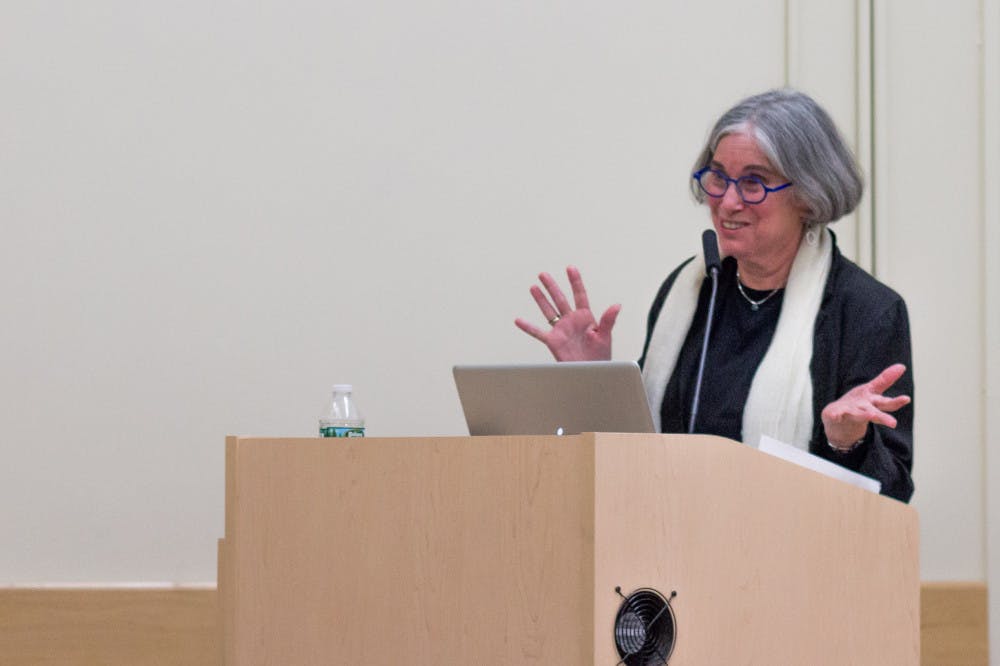Ruth Fine, curator of the exhibition “Procession: The Art of Norman Lewis,” visited campus Wednesday to discuss the life of 20th century African-American artist Norman Lewis.
Fine has had an illustrious career in the art world. Among other achievements, she was a curator of the National Gallery of Art in Washington, D.C. for four decades. Fine has collaborated with big names including Jasper Johns, John Marin, Roy Lichtenstein and Georgia O’Keeffe, said Wendy Edwards, chair of the visual arts department.
The exhibition, comprised of nearly 100 works, opened Nov. 13 at the museum of the Pennsylvania Academy of the Fine Arts. The exhibition is divided into several sections that study Lewis’ formative years as well as his various artistic interests.
“Lewis had a complicated life. He truly straddled the world of Harlem and the world of the wider artistic community,” Fine said.
As a young artist, Lewis was mostly self-taught and visited the Museum of Modern Art frequently to study the most recent artwork on display. He was inspired by the tribal art featured in the museum as well as by works of artists such as Wassily Kandinsky, Vincent Van Gogh and Pablo Picasso.
Lewis transitioned to abstraction in the mid-1940s. Fine discussed his work post-1945 in terms of five different trends.
The first trend, titled “Visual Sounds,” is a collection of paintings that seem dedicated to transcribing to canvas the experience of listening to different genres of music such as jazz. “He had a way of drawing a line and pulling it (across the canvas),” Fine said.
One section of the exhibition, “Rhythm of Nature,” seems to pursue his interest in painting the intangible. “Ritual” covers his interest in painting parades or public gatherings of people. His first painting of this kind was painted after the first Labor Day Caribbean street parade in Harlem in 1947.
“Civil Rights” is what Lewis is perhaps most known for today. His subjects ranged from Ku Klux Klan marches in Washington to softer, romantic abstractions. These abstractions “were his way of staying sane” during the turbulent years of the Civil Rights era, Fine said. Most of these paintings are in black and white. “The last large show of his work in 1998 focused mostly on these black paintings,” Fine said.
The last section of the exhibition, titled “Summation,” highlights Lewis’ striking use of color. Some of the paintings gathered from the later years of his life use bright and happy colors like yellow, while others seem more ominous with his use of black and bright red. The mission of this new show “was to prove that he did not only do back and white paintings. He was also an amazing colorist.”
Much is still unknown about Lewis, who is believed to have produced 2,000 works during his lifetime. “The most basic questions still surround him,” Fine said.
It is unknown where Lewis’ family originated. He also rarely dated or titled his paintings, making it difficult to keep track of his artistic evolution. It is unclear how he made his art and what materials he used to paint or draw. “The more I look at him, the more complicated and beautiful his work gets,” Fine said.
But some things are clear about Norman Lewis: He was one of the great artistic innovators in postwar America. He was a recognized black artist who — while esteemed by the larger New York art community — struggled to find his place in the galleries of the Met. He was one of the co-founders of Cinque gallery, which was devoted to promoting young minority artists. He also struggled throughout his career with tension between a school of thought dictating that African-American artists devote themselves to political art and his eclectic range of interests.





